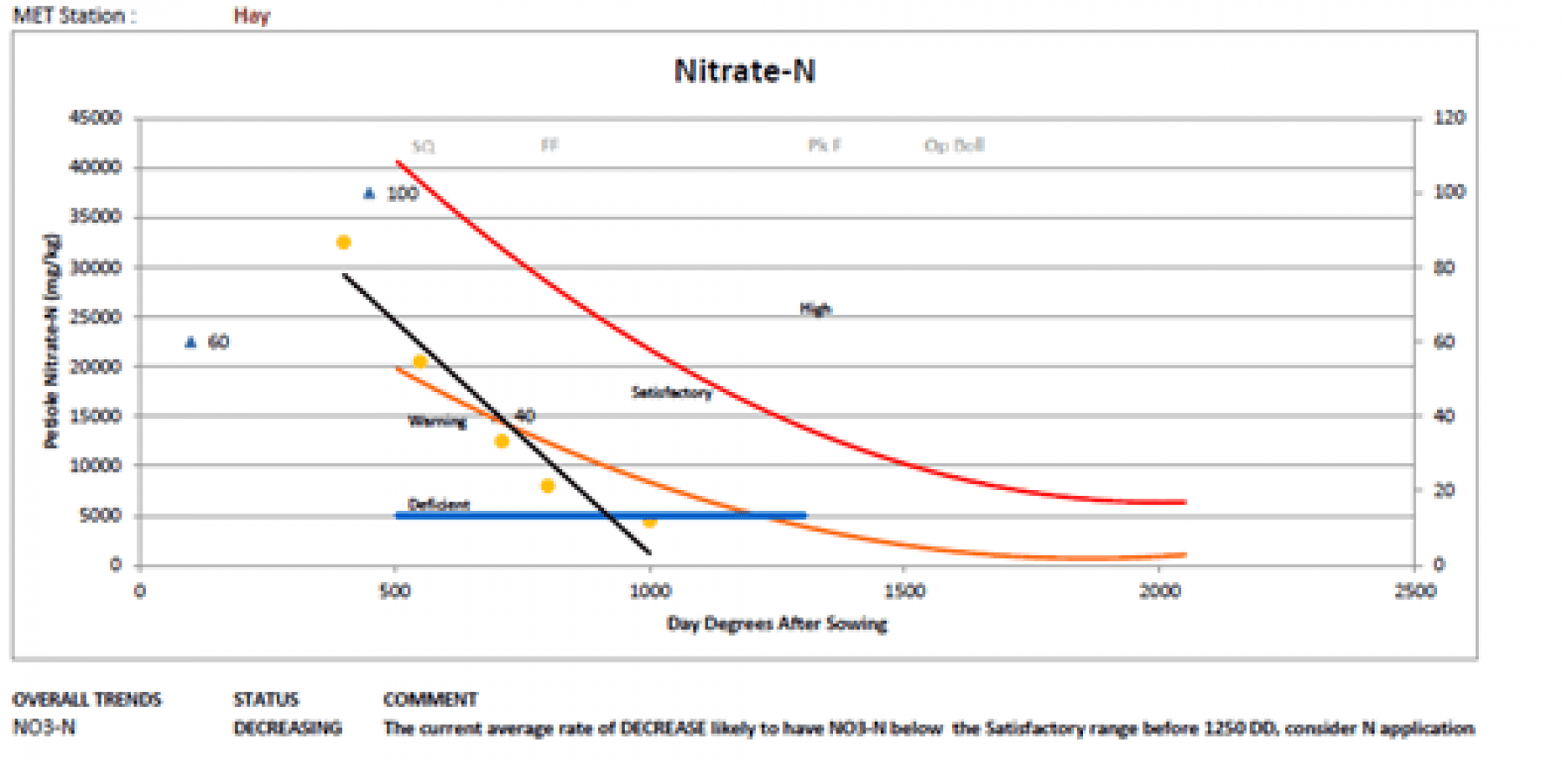N Management by old ‘rules of thumb’ could be high risk
Simple, local options to manage this risk based on measurement and best science are now available with Opterra Cotton Nutrition.
REGISTER for your local service here.
| Measure | What can it tell me to help manage N? | When is it most useful? |
| In crop deep N soil test | How much N can the soil supply, fine-tune seasonal N fertiliser rate | Post-plant to squaring |
| Leaf blade | Crop N health based on growth rate and plant N stored to date | All growth stages |
| Petiole (leaf stalk) | Is the soil N supply matching the crop growth rate recently? Fine-tuning the timing of post-plant N. Avoid excess plant vigour and quality defects at defoliation. | Squaring till 4 weeks post first flowers. Crop cut-out |
Read on for more!
| How does it work for in-crop Nutrition? | Benefits |
With Opterra Cotton Nutrition you only have 2 steps:
Compare this with the extra work in completing lab forms, packaging/arranging freight, inputting data and creating reports. |
Saves you time (hours with each sampling) |
| You will receive the interpreted seasonal status report for the field within 2 working days for petioles and 4 days for leaf blades. Important: These services continue to operate during the Christmas-New Year critical growth period for summer cropping. | Fastest turn-around |
| Plant Samples are dried locally to ensure against plant sap leakage which can occur in any long transit to lab analysis. Sample cooler boxes are available from each service provider. | No sample degradation in transit to the lab |
| You have access to Dr Chris Dowling from Back Paddock for email and phone contact with any agronomic queries that arise from test results. | The industry’s leading independent technical support |
This service supports local, technology-based employment in rural communities, helping to build regionally-based capabilities for productivity and natural resource accountability in agriculture.
The outcomes:
- Optimise yields and nitrogen costs
- Contribute to cotton industry’s environmental stewardship and emissions reduction goals – ‘measure’ and aim for Nitrogen Use Efficiency (NUE)
- “… five years to 2018-19, on average almost 60 per cent of the emissions to grow and ship to port a bale of cotton came from nitrogen fertiliser”https://www.cottoninfo.com.au/blog/2021-sustainability-focus-april-less-emissions-more-sequestration
- Help ensure against late season lint quality penalties
Petiole Nitrogen Management report:

Leaf blade crop nutrition ‘health’ & N stored report:

REGISTER to support your local or to access our Opterra N Pools Calculator for Cotton here.

